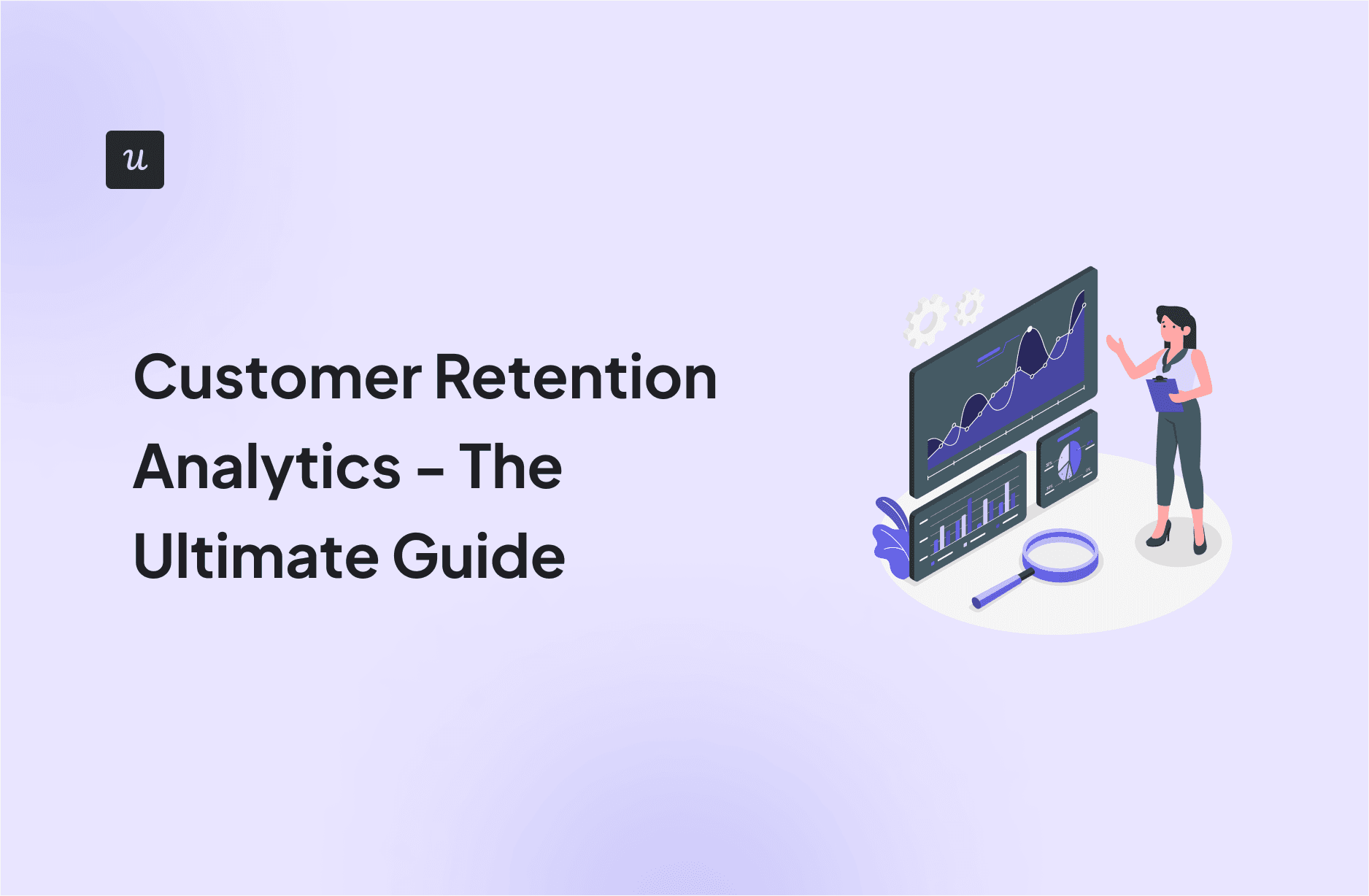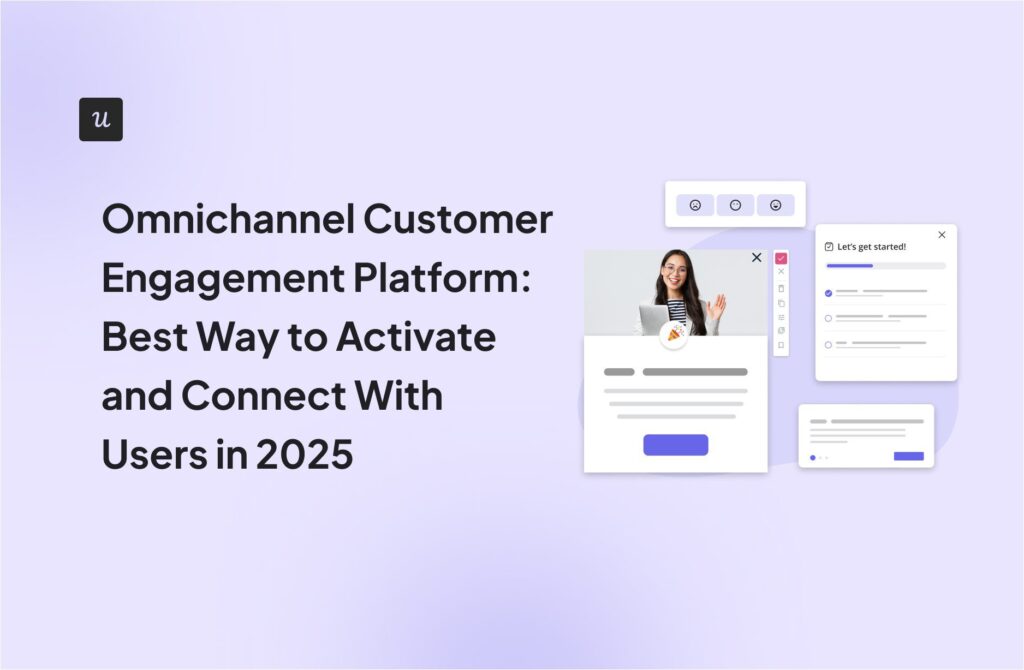
How much does your business stand to gain from using customer retention analytics?
While acquiring new customers is crucial, it’s important not to neglect the ones you already have. Considering that retaining existing customers (and reducing churn) costs a fraction of customer acquisition costs, analyzing customer retention is important for any SaaS business.
Effective retention requires more than intuition to determine what will keep your loyal customers satisfied. In this guide, we’ll provide step-by-step processes to generate hard, actionable data and clear strategies for maximizing your customer relationship.
Get The Insights!
The fastest way to learn about Product Growth, Management & Trends.
What is customer retention analytics?
Customer retention analytics is the process of analyzing user metrics and behavior to understand the factors that drive customer retention and churn.
In other words, it’s about understanding the survival rate of your existing customers (hence the nickname, “survival analytics”) and using that data to reduce churn.
Companies accomplish this using statistical techniques that look at past activity trends and predict future customer retention rates among their various user segments. Frequently this means tracking customer behavior among a specific cohort of customers over a set period of time.
The importance of customer retention analytics
Customer retention analytics are crucial as they support your customer retention efforts and maximize customer potential. For example:
- Low customer retention rates mean that the money your company puts into customer acquisition costs (CAC) fails to translate into strong customer lifetime value (LTV). To avoid floundering, a company’s LTV to CAC ratio should be greater than three.
- New customer acquisition is considerably more expensive than retaining an existing one.
- Retained customers can generate significant profits. When you give value to your customers over a repeated period, they will be more receptive to upsell messages. This will increase their lifetime value and your profits.
- Customer retention doesn’t happen on its own. Analyzing customer retention data is foundational to effective customer retention strategies.
The benefits of customer retention analytics
It’s clear that using efficient retention analysis and gaining a deeper, data-driven understanding of your customers’ behavior is important for your company’s health and sustainable growth.
However, knowing is only half the battle. Customer retention analytics are key supports for action to befit your company:
- Minimize churn and improve retention based on customer analytics results – keep that LTV to CAC ratio healthy!
- Identify high-value customers who are susceptible to low survivability rates. Focus on your churn prevention strategy where the return is highest.
- Identify which customer acquisition channels are providing customers with strong retention rates. This allows you to evaluate and hone in on particular channels, such as affiliates or pay-per-click campaigns, that yield customers with the highest survivability.
- Dial-in LTV calculations for improved accuracy in financial planning.
What types of customer retention analytics are there?
In the realm of customer retention, a multitude of analytical approaches come to the forefront, each offering unique insights into consumer behavior and loyalty.
This section introduces the various categories of customer retention analytics, shedding light on how they can be used to measure customer retention.
1. Periodic customer retention analytics
Periodic customer retention analysis involves identifying a user activity or event and tracking it within a customer cohort over a set period of time.
Depending on your company and the target user activity, time periods may be days, weeks, or longer – whatever length of time best demonstrates true ‘activity’.
Customer activity is monitored over each period of time to produce a count of the number of customers who were active in each period. Finally, the number of active customers is divided by the total number of the cohort to give a percentage of active users over each time period.
This retention analysis gives a good snapshot of how customer “survival” fares over time within a particular cohort, and can easily provide an ongoing report of customer satisfaction and engagement with your company’s product.
A useful metric on its own, it can also provide insights when compared against the activity rates of other cohorts.
2. Retrospective customer retention analytics
Retrospective customer retention analysis, on the other hand, focuses more on identifying when your customers actually churn.
Instead of measuring activity frequency, this analysis defines a period of inactivity that likely indicates churn (say, 7 days of inactivity for a social media app, or one month for a retail app).
Then, the percentage of customers in a cohort who meet this inactivity threshold is measured across longer intervals to determine the time and rate at which customers churn.
In sum, the periodic analysis gives you real-time insight into customer activity, while retrospective analysis gives you the actual survival rates of customers and highlights key points when intervention may support customer retention rate.
3. Descriptive analytics
Descriptive analytics uses both real-time and historical customer data to spot trends as well as the relationships between certain customer retention metrics.

Analyzing historical data gives you a clear view of your journey with customers. It helps you know what strategies worked and didn’t work for your customers.
For example, you might learn from descriptive analytics that 25% of your users churned after x interactions. If a quarter of your customers are leaving your product because of similar issues, then you should look into where things went wrong and improve your product accordingly.
4. Predictive analytics
Predictive analytics uses models and algorithms to predict customer behavior or the likelihood of certain outcomes.
It is the best for analyzing trends and patterns within customer segments.
Suppose that in Q3 of 2024, your product’s purchase rate is expected to decline. You can now collect user feedback to understand what customers want and take the necessary steps before your closed deals start to drop.
5. Prescriptive analytics
Prescriptive analytics uses data to figure out what the best course of action is and make decisions based on multiple factors.
It offers input into the most optimal action you can take in a specific situation.
For example, prescriptive analytics can reveal that online advertisements and social media marketing can boost your sales by 20%. You need to plan your marketing campaigns to fit this particular scenario.
6. Diagnostic analytics
Diagnostic analytics uses data to figure out why certain events occurred whether that’s a rise in churn rates, a drop in lifetime value, or other shifts in the makeup of your SaaS business.
For instance, you may notice that 50% of your users believe that a particular product is not what they expected it to be. Now you need to dig deeper to know whether that product exceeded their expectations or failed to provide value.
How to implement customer retention analytics for your SaaS
Now that we have learned about the importance of customer retention analytics and its types, it’s time to understand the process behind it.
Segment your users and uncover the most valuable segments
Segmenting users allows you to center marketing efforts on the highest-value customers who are least likely to churn:
- Who is currently your “best” customer?
- What is your “ideal” customer persona? You can use this template to help you create one.
- Who is most valuable for your company? Segment customers by Plan, Lifetime Value, and Annual Contract Value.
How to segment your users?
- Ask your users questions about their roles and goals. A micro survey on the welcome screen is an easy way for users to segment themselves:

- Your user analytics tool (e.g., Userpilot) is key to automatically building the right user segments and capturing the users who meet your chosen criteria:

Perform cohort analysis for each segment
Cohort analysis measures specific behaviors within a user segment. In SaaS, the measured customer behavior often tends to be churn so a cohort analysis will reveal when users within a particular segment (or “cohort”) stop using your product.
An effective cohort analysis will help you answer the following questions:
- What is the lifespan of users within my product, and at what point do most churn?
- Which user segment (e.g., by plan, persona, etc.) has the highest churn rate?
A cohort table organizes historical data from your analytics in a way that makes answering these questions easier:

Performing a cohort analysis to find your retention rate is an easy job with a tool like Userpilot.
Userpilot allows you to:
- Create cohorts on the user and company level
- Choose the start and return events defining retention in your product, like ‘Signed in’ and ‘Invited teammate’
- Filter the events by segments, user properties, and company properties.
- Choose the interval by which you view the data (days, weeks, months) and date range (e.g. last 2 weeks, or last 180 days).
Clicking on each cell reveals data on specific users that were retained.
You can also visualize the average retention as a line graph, both linear and cumulative.

Monitor customer retention metrics on a frequent basis
Measuring customer retention analytics is not a once-a-year activity. To eventually improve customer retention, you need to monitor key metrics consistently. This will help you proactively identify problem areas before they escalate.
A user retention dashboard, like the below one from Userpilot, shows the retention rate and trend for different time periods and different users in a single place.

User retention dashboard in Userpilot
Analyze product usage to capture at-risk users as part of your customer retention analytics
Some customers are going to be at more risk of churning than others, and a good way of identifying these customers is by analyzing customer journey and product usage. The first step in this analysis is to map your user journey.
- What touchpoints should a healthy user have with your product? In other words, determine what features customers should be using, when they should begin using them, and how often.
- Set up in-app events that occur at each step of the user journey to motivate user progress along with it and to track that progression.

Now that key engagement points have been established for an existing customer, it’s possible to identify customers who are at risk of churning due to low product engagement. For example, the number of your product’s tools a customer utilizes is a good indicator of their engagement.
Customers who use your product for more than one feature or tool within a platform have integrated the product more fully into their own business and are thus less likely to churn.
Another indicator is the number of customers dropping off from the funnel. You can even pair funnels with session recordings to see what happened with these drop-off users. With Userpilot, all of these are possible, and of course, without coding.

The number of active experiences a customer has with your product is another strong indicator, as well as the rate of engagement across multiple product features.
Customers who display low product engagement may be struggling due to a lack of technical competence or maybe hitting compatibility issues.
Identifying these unengaged customers lets you implement intervention strategies that can help them increase product use and thus your user retention rates.
Calculate customer maturity score
Not all customers are going to be able to get significant value out of your product.
Evaluate the “maturity” of customers in each segment to determine who can really make your product work for them.
Your customer success team will be able to outline which customers are using your product most effectively and what characterizes these “mature” users. For instance, you may find that it takes a Product Manager with at least two years of experience and a team of three or more to truly make the most of your product.
Calculate the global customer health score
Your global health score represents the combined customer health scores across your user segments. A customer health score identifies whether customers are “healthy” or at risk of churning. This is crucial data for your customer retention analytics as it helps you see which customers are in need of additional marketing or service interventions.
You can calculate customer health scores by measuring customers’ breadth, depth, and frequency of product usage. Breadth indicates the number of active users for a particular account; Depth is the number of features or tools being utilized (as indicated, perhaps, in your user journey); and Frequency measures how often and for how long customers use the product.

Assessing your user retention rate and exploring the sources of churn is a critical first step. However, it’s just as important to turn customer retention data into action – by developing a retention strategy!
Set up in-app retention strategies
In-app retention strategies are effective for users who score low on customer health due to the under-utilization of product features. These may provide tips or reminders that nudge the user toward more effective, broader use of the product and consequently higher value and a higher health score (along with better retention rates!).
In-app strategy for customer retention is all about supporting users to get better value from your product:
- “Prevention is better than cure”: Ensure your onboarding experience is strong and guide new users with interactive walkthroughs – just like the below Rocketbots walkthrough created with Userpilot.

- Don’t stop at the initial onboarding. Secondary onboarding experiences can drive users to adopt more product features and strengthen engagement depth.
- Provide in-app experiences that steer users away from “negative” behaviors that impact their health scores, such as neglecting interactive walkthroughs or onboarding checklists.
- Incorporate responsive tooltips and walkthroughs that drive user adoption of key product features.

- Onboarding checklists are great for driving user activation and putting them on the path toward success.

Set up email retention strategies
Prioritize user retention in every interaction you have with your customers. Reserving retention tactics until a customer is ready to churn forfeits significant opportunities to increase value for that user and drive growth.
Email retention strategies are beneficial for users who are starting to fall away from the product or who have levels of inactivity that put them at risk of churning.
There are a few key characteristics that can help your emails enhance customer retention:
- Focus on user goals and outcomes.
- Connect with individual aspects of the user’s journey and product experiences.
- Provide support for more successful product engagement.
- Highlight your company’s brand and em
- phasize user support accessibility.
- Make an impression – leave the user with a positive memory of the interaction.
For example, the following email from Airfocus does a terrific job of highlighting user needs, user outcomes, and approachability while asking for customer feedback. Take a look:

Conclusion
Customer retention analytics help you understand your customers and nurture the relationships that enhance product value and customer experience for your users as well as their value to your company.
Ready to get started with retention analytics and customer retention strategy? Get a demo and see how Userpilot can make user data and predictive analytics work for your company.
Customer retention analytics FAQs
How do you measure customer retention?
Customer retention is measured by calculating the percentage of customers who continue to do business with you over a given period. This can be done through various metrics like customer churn rate, repeat purchase rate, and customer lifetime value.
What is the KPI for customer retention?
The most common KPI for customer retention is the Customer Retention Rate (CRR). It’s the percentage of existing customers who remain customers after a specific period.
What is retention in data analytics?
In data analytics, retention refers to the ability to keep users engaged with a product or service over time. It involves analyzing user behavior data to understand how to keep customers coming back and reduce churn.






